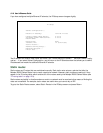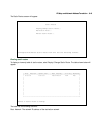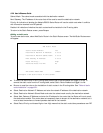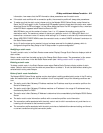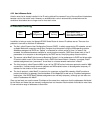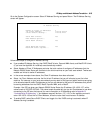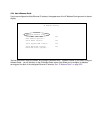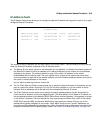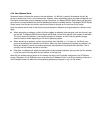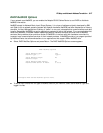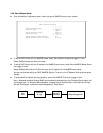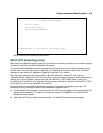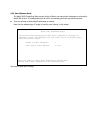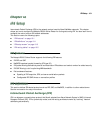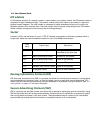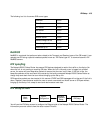9-26 User’s Reference Guide
Numerous factors influence the choice of served address. It is difficult to specify the address that will be
served to a particular client in all circumstances. However, when the address server has been configured, and
the clients involved have no prior address serving interactions, the Netopia R5000 Series Router will generally
serve the first unused address from the first address pool with an available address. The Netopia R5000 Series
Router starts from the pool on the first row and continues to the pool on the last row of this screen.
Once the address server and/or the clients have participated in address serving transactions, different rules
apply:
■ When requesting an address, a client will often suggest an address to be assigned, such as the one it was
last served. The Netopia R5000 Series Router will attempt to honor this request if the address is available.
The client stores this address in non-volatile storage, for example, on disk, and the specific storage
method/location differs depending on the client operating system.
■ When requesting an address, a client may provide a client identifier, or, if it does not, the Router may
construct a pseudo-client identifier for the client. When the client subsequently requests an address, the
Router will attempt to serve the address previously associated with the pseudo-client identifier. This is
normally the last address served to the client.
■ Otherwise, the Netopia will select the least-recently used available address, starting from the first address
in the first pool and ending with the last address in the last pool.
Note that the address serving pools on this screen are tied to the IP subnets configured on the IP Subnets
screen. Changes to the IP Subnets screen may affect the IP Address Pools. In particular, deleting a subnet on
the IP Subnets screen will delete the corresponding address serving pool, if any, on this screen.



